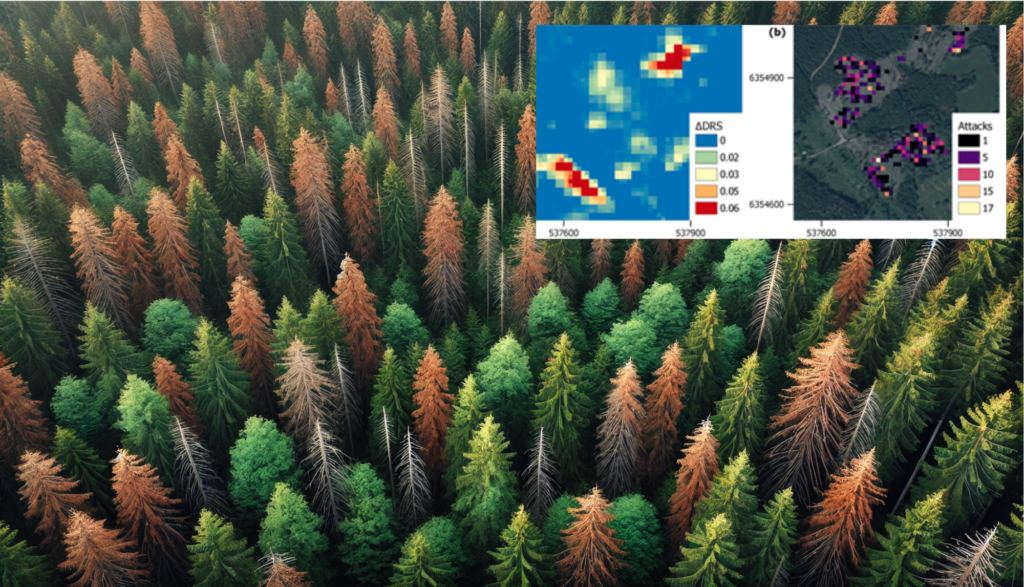June 21, 2024 – Umeå, Sweden
The RESDiNET team at the Swedish University of Agricultural Sciences (SLU) has achieved a significant breakthrough in the detection of bark beetle attacks on spruce trees using advanced remote sensing tools. Building on years of pioneering work in this field, the team’s recent paper, published in Ecological Indicators, introduces a novel vegetation index that promises to revolutionize forest management and pest control strategies.
Innovative detection method
The research, led by Associate Professor Henrik J. Persson and his colleagues Dr. Simon Kärkemo, Dr. Eva Lindberg, and Dr. Langning Huo from the Department of Forest Resource Management in SLU, developed the ∆Distance Red & SWIR (∆DRS) index. This index, based on multi-temporal Sentinel-2 satellite images, enhances the ability to detect physiological changes in trees associated with water and chlorophyll content, which are early indicators of bark beetle infestations.
Using data from a large-scale study area of 110 x 110 km² in south-eastern Sweden, the researchers applied the ∆DRS index to monitor and map bark beetle damage. They validated their results with operational harvester data from a private forest company, achieving an impressive overall accuracy of 78% in distinguishing between healthy and infested trees.
Significant findings
The study revealed that the largest changes in the ∆DRS index values corresponded to clear-cuts, and areas severely affected by bark beetle attacks. These changes were successfully detected within one year of the initial infestation, demonstrating the method’s potential for timely intervention.
Moreover, the ∆DRS index proved effective in identifying various disturbances and water-induced changes across the landscape, highlighting its versatility and robustness in different environmental conditions. This makes the index a valuable tool for ongoing forest health monitoring.
Implications for forest management
The early detection of bark beetle attacks is crucial for mitigating their devastating impact on forests. Traditional detection methods often identify infestations too late, by which time the beetles have spread extensively. The use of remote sensing technology, as demonstrated in this study, offers a proactive approach, enabling forest managers to take early action to contain outbreaks and minimize damage.
“This research represents a major step forward in our ability to monitor and manage forest health. By using satellite imagery and the ∆DRS index, we can detect infestations much earlier, providing a critical window for intervention,” said Assoc. Prof. Henrik J. Persson, the lead author.
Future prospects
The authors suggest integrating the ∆DRS index into national forest monitoring programs to provide continuous updates on forest health. Further research is needed to refine the method and explore its applicability in different forest types and regions. This study exemplifies the critical role of advanced remote sensing tools in modern forestry, paving the way for more resilient and well-managed forest ecosystems.
For more details, the full paper can be accessed in the Ecological Indicators journal https://doi.org/10.1016/j.ecolind.2024.112036
Contact:
Henrik J. Persson
Department of Forest Resource Management
Swedish University of Agricultural Sciences (SLU)

